You are viewing United States
- United States
- Canada
- Mexico
- South America
- EMENA
- Sub-Saharan Africa
- Russia
- South Asia
- Asia Pacific
- China
- Global
Choose Your Location:
- United States
- Canada
- Mexico
Popular Searches
- Animal Nutrition & Health
- KEM SAN®
- Water Acidification for Animal Performance
Water Acidification for Animal Performance
A commonly accepted practice in the livestock and poultry industry is to acidify drinking water to reduce the pathogenic bacterial load and prevent the development of biofilm. A target pH level is often used to quantify the purification of the acidifying product; however, this can be misleading – especially depending on where in the water line the pH is taken.
Citric Acid vs. Buffered Acid Blend
Not all water acidification programs are the same. Citric acid, for example, is triprotic, meaning that it can lose 3 protons or hydrogen ions. As it loses each proton/hydrogen ion, it becomes less effective in the water against pathogens.
Alternatively, KEM SAN® is a buffered product that consistently reduces the pH to 4.7 and does not lose its effectiveness against pathogens. Bactericidal characteristics of a water acidifier, however, cannot be judged solely on the ability to lower the pH (i.e. acidify) of the water. The bactericidal activity of a given acidifier may vary widely depending upon the organism tested. KEM SAN demonstrates superior bactericidal activity against Salmonella, Escherichia coli, Pasteurella, Streptococcus, Clostridium and other pathogenic organisms when compared to citric acid.
A Look at the Research
In one study, the bactericidal activity of KEM SAN and citric acid were determined at various concentrations. Citric acid was mixed into a stock solution containing 410 g of citric acid in one gallon of water, which was then added to the drinking water. Concentrations of both acidifier products were set at 0, 0.25, 0.5, 1.0 and 2.0 oz/gal of water. The resulting pH of the water was then measured and recorded.
Pathogenic bacteria were added to a portion of each water sample at the rates of 100,000, 10,000, 1,000, 100 and 10 colony-forming units (cfu) per ml. After a 24-hour incubation period, a positive or negative turbidity reading was taken on each inoculated water sample. If the water sample was cloudy, the reading was positive, indicating bacterial growth. If the water sample was clear, the reading was negative, indicating bacterial growth did not occur.
The pH of all untreated water was 6.9, while the pH of all treated water was significantly lower. It is interesting to note that the water pH following addition of citric acid declined with increasing treatment concentrations; whereas the pH of the water treated with KEM SAN liquid antimicrobial dropped to 4.5 and did not go lower as the concentration increased. This intended response is advantageous for bactericidal kill power, handling characteristics and equipment life.
Bacterial viability was confirmed for each organism at each level of inoculation by generating a positive turbidity reading. The bactericidal activity of each acidifying product is notably different. Ultimately, relative bactericidal activity of KEM SAN was superior to citric acid. See the charts below for specific results. Note that a “+” sign indicates bacterial activity while a “-“ sign indicates no bacterial activity. A larger shaded area in the charts indicates a higher level of biocidal activity.
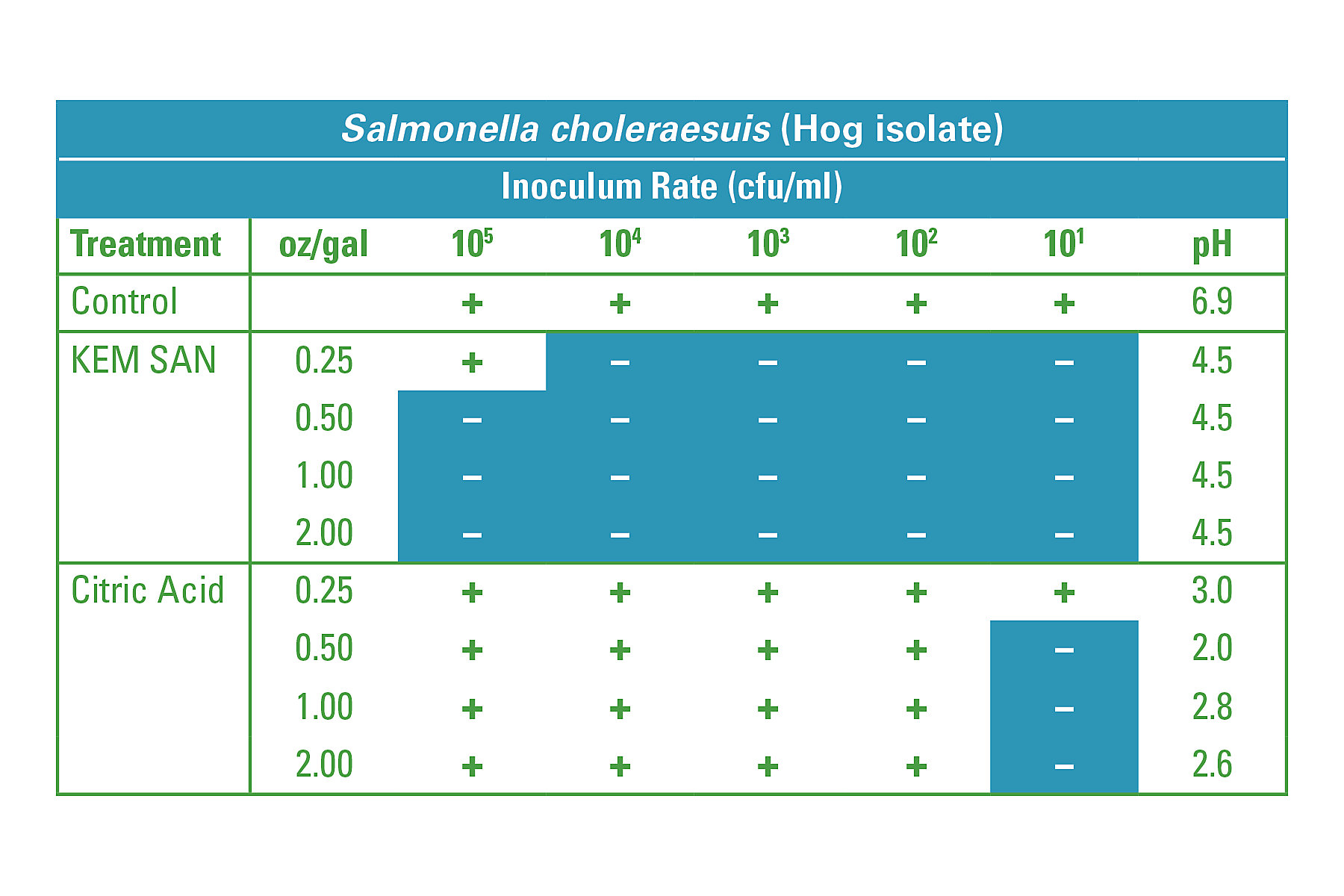
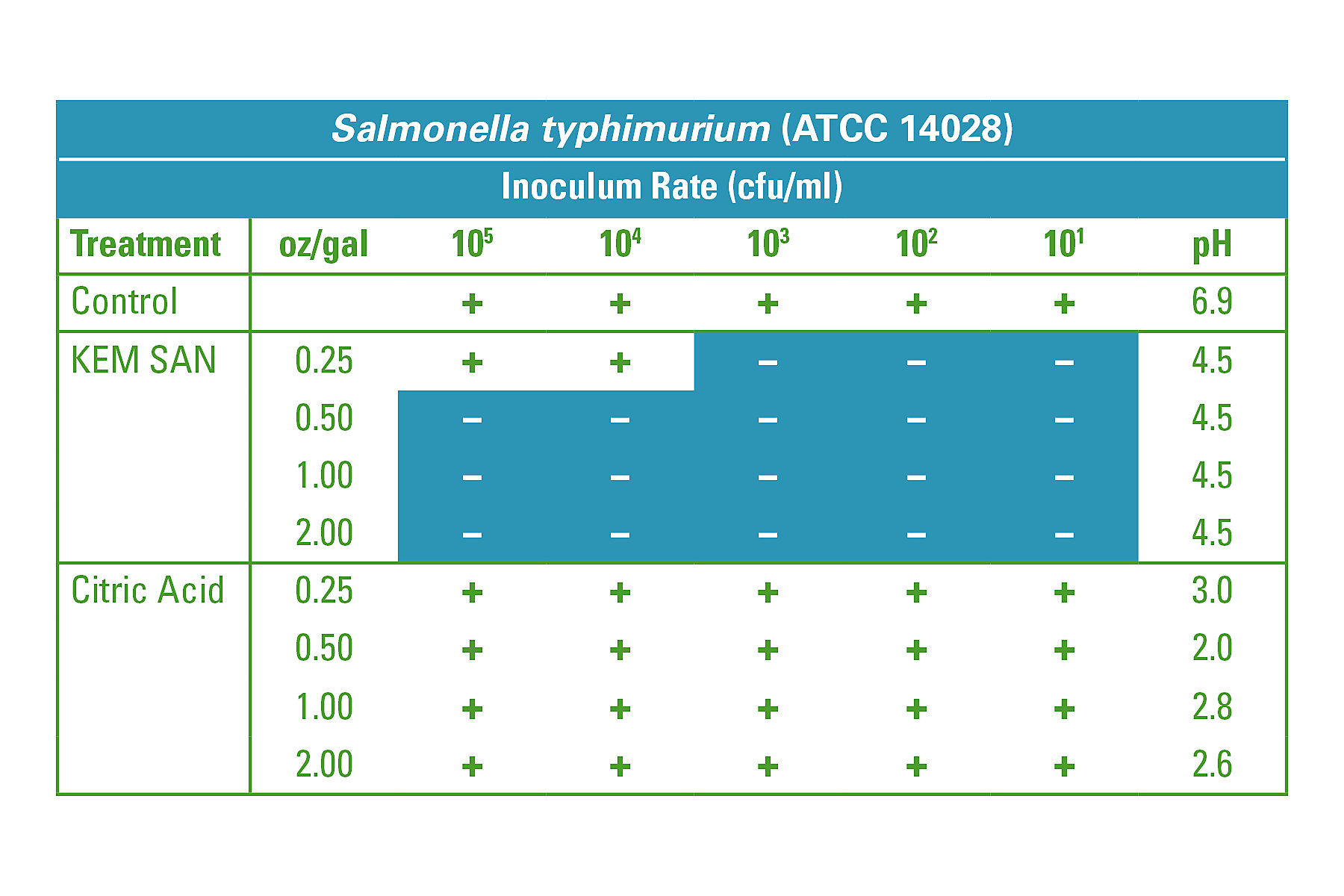
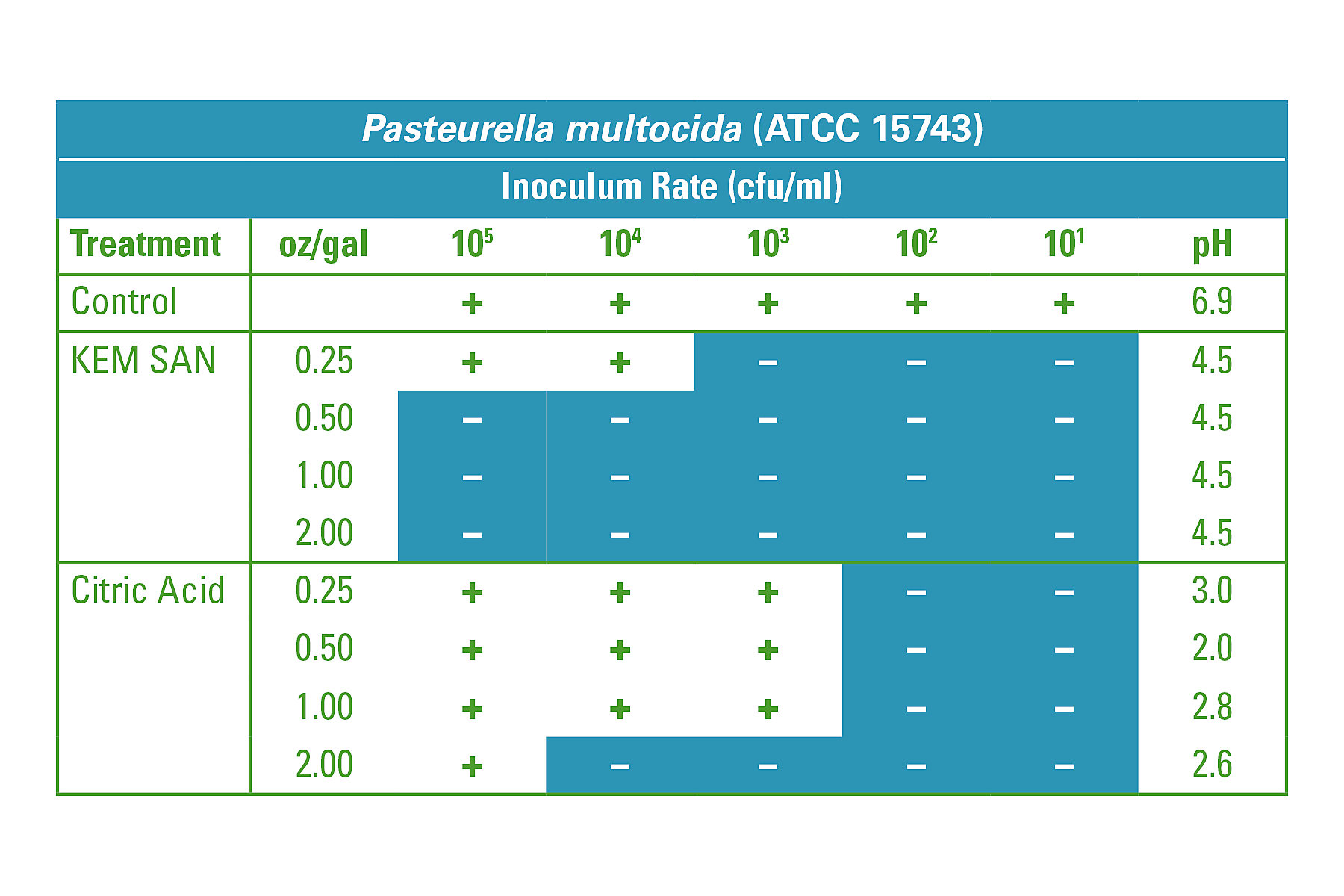
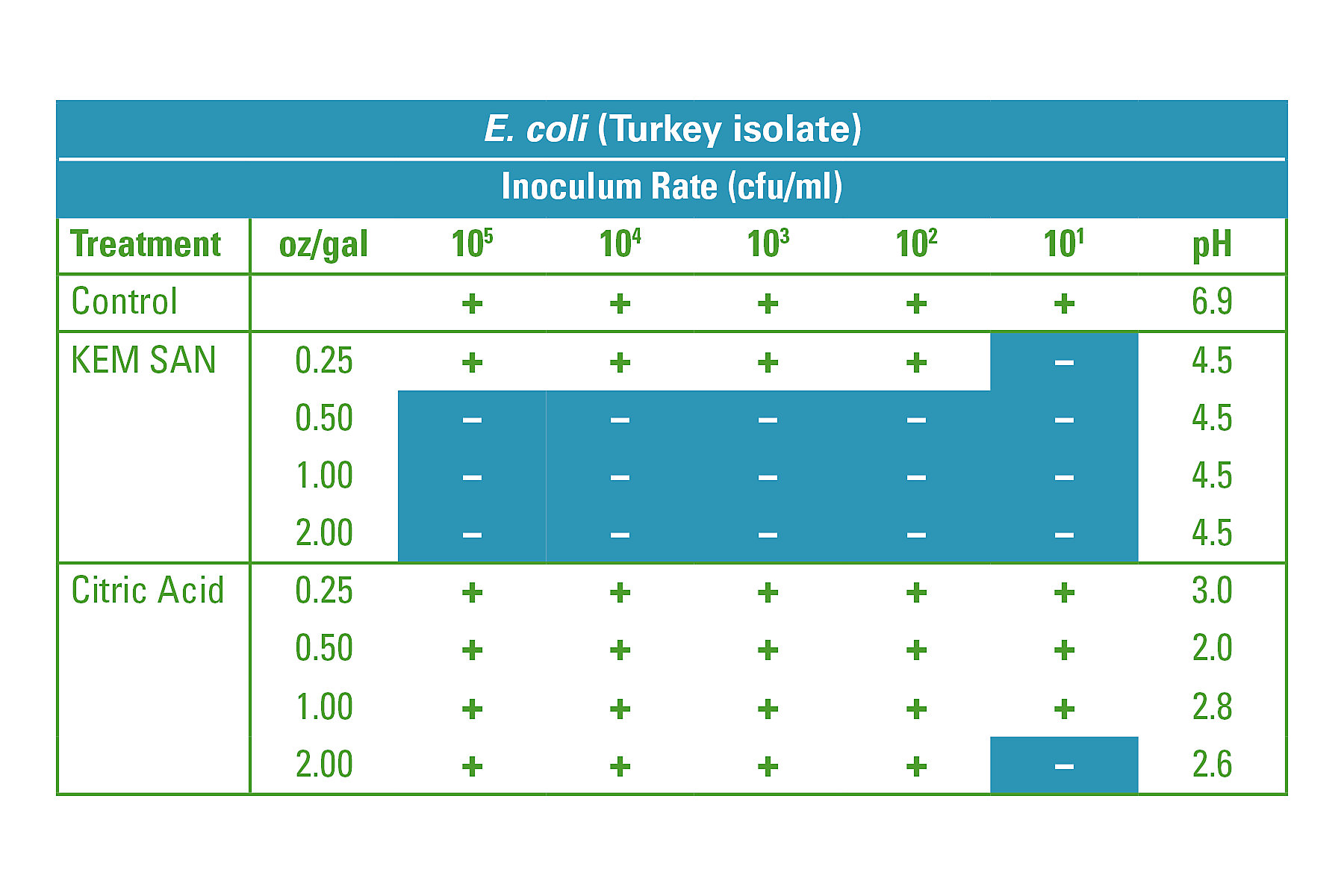
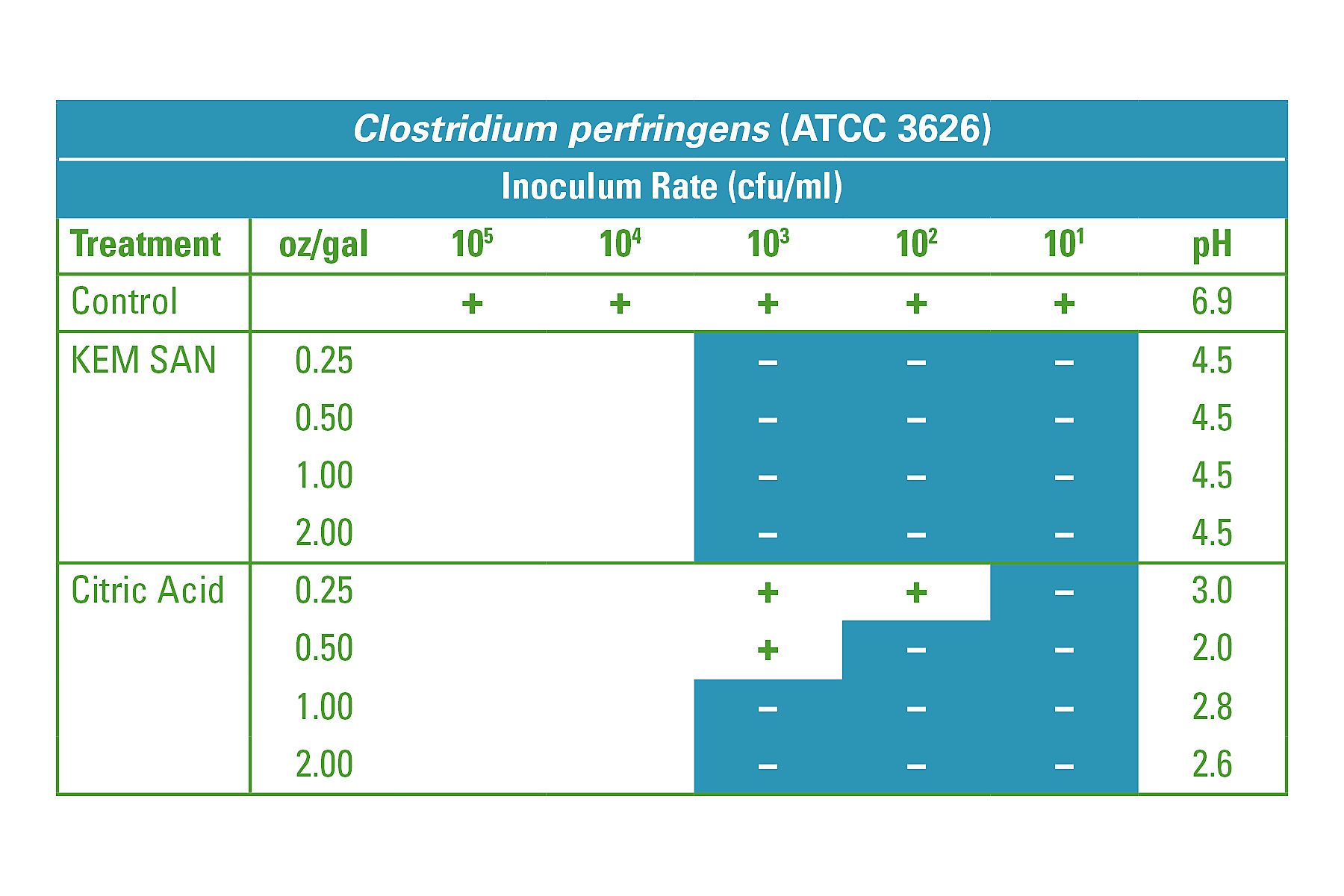
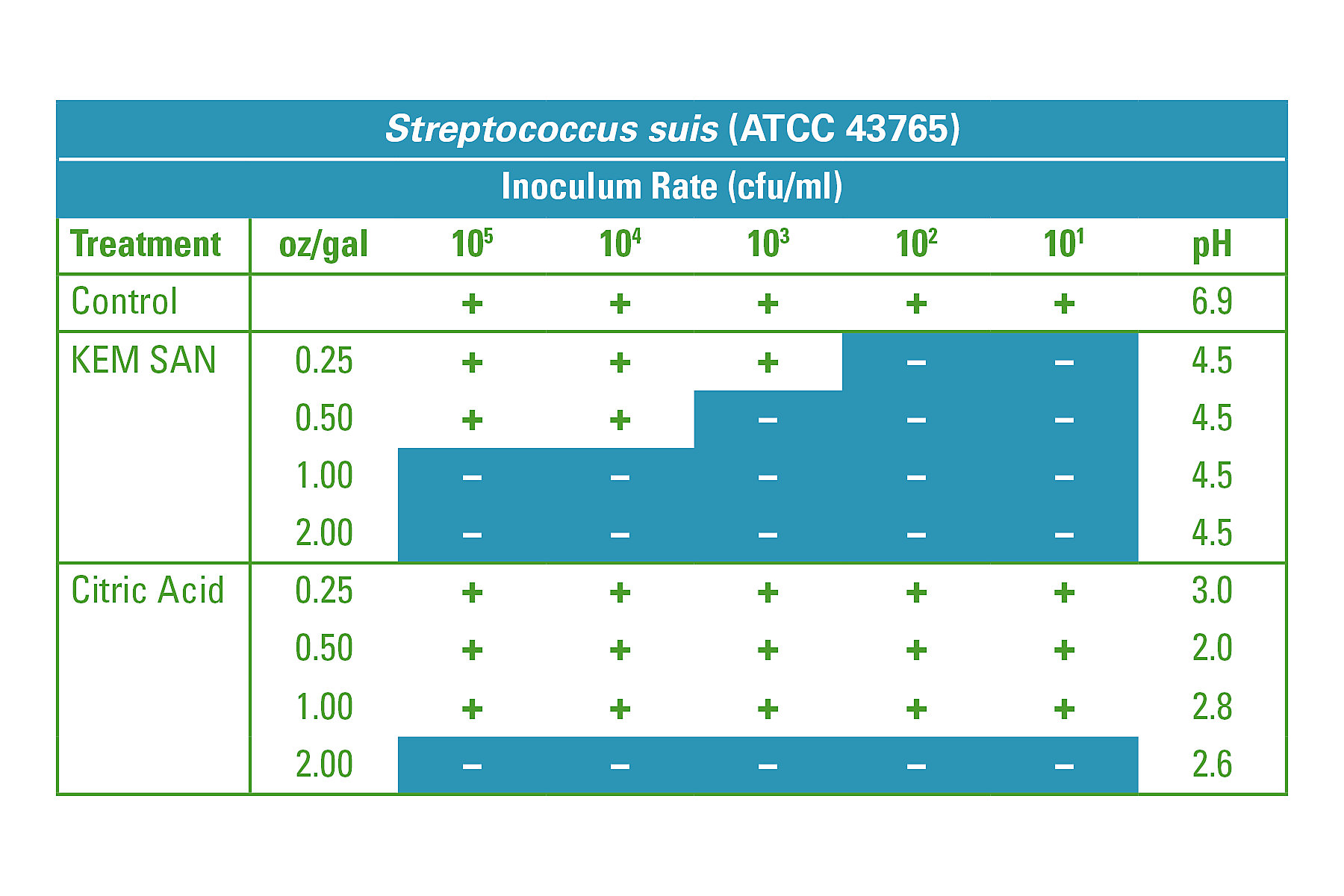
Resources

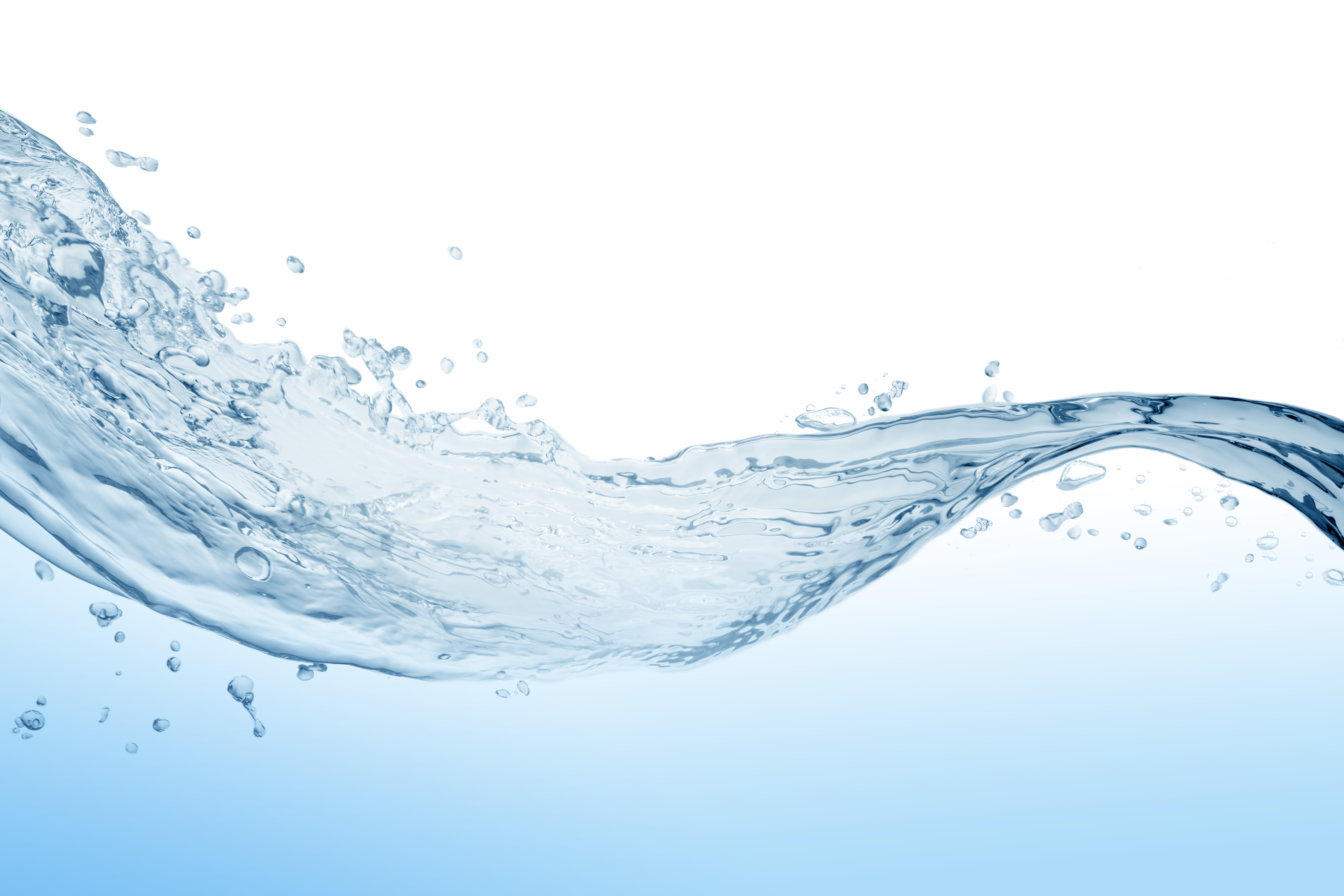 Don't Let Unclean Water Rob Livestock Performance
Don't Let Unclean Water Rob Livestock Performance
When it comes to the performance of a production herd or flock, the source, quantity, quality and composition of water can have a major impact on how animals perform. Not only should water be available in sufficient quantities, but it should have the right balance in pH and minerals and other components in order to maximize digestive function, gut health and overall animal performance.
Reference
A Comparison of Water Acidifiers on Drinking Water pH and Bactericidal Properties, BB-03-00220. TL- 17-00104.
Have a Question?
If you have a question about our products or services, or just want more information, fill out the form below and someone on our team will be in contact with you.
- California Residents
- California Supply Chain Act
- Canada Forced Labor and Child Labor Report
- Email Disclaimer
- GDPR Personal Data Addendum
- General Terms & Conditions for Vendors
- Global Environmental Policy Statement
- Indirect Cost Estimates
- Kemin Terms & Conditions
- Modern Slavery Act Transparency Statement
- Privacy Policy
- Sitemap
- Change Cookie Consent
- Animal Welfare Statement
© Kemin Industries, Inc. and its group of companies All rights reserved. ® ™ Trademarks of Kemin Industries, Inc., USA
Certain statements may not be applicable in all geographical regions. Product labeling and associated claims may differ based upon government requirements.
